To See a Mockingbird

Northern Mockingbird
Photo Credit – the Author
Amidst a cacophony of mid-morning birdsong, a medium-sized bird, approximately 10 inches (25 cm) in length, caught my eye. Its tail, as long as its body, was a striking feature. The bird’s plumage was a mix of grey, darker above and lighter below, adorned with distinctive white patterns on its wings and tail, which were particularly noticeable when it took flight. The bird was a Northern Mockingbird, a captivating sight indeed.
The bird appeared in the exact location a year earlier, in a housing development near the Corte Madera Creek in northern California. The purpose of its song was unclear. Maybe it was calling a mate, protecting its territory, catching insects, or simply listening to its voice. During my childhood bird watching in England, the Northern Mockingbird was a species I had never encountered. The bird, a member of a group of New World species, is a rare vagrant in Britain, with years passing between individual sightings. The occasional appearance is thanks to Atlantic tailwinds or even boats offering unexpected lifts, adding a touch of mystery to its presence.
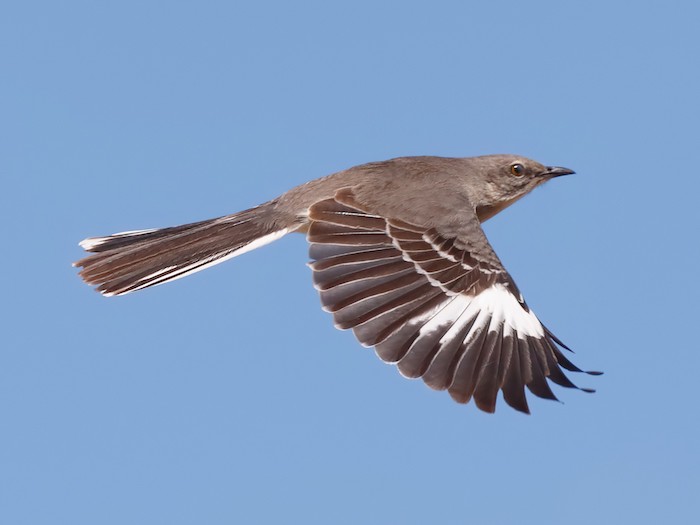
Northern Mockingbird
Photo Credit – eBird
The Northern Mockingbird is a testament to adaptability, breeding from southern Canada across the United States and south into Mexico and the northern Caribbean islands. It has even managed to establish itself in Hawaii. Most birds are yearlong residents, but a few occasionally wander in the fall and winter, especially those that breed in the north. The species expanded its range along both coasts into Canada during the 20th century and prefers open land below about 1000 feet (300 meters), where shrubs and small trees provide cover. If you have encountered Western or Eastern Mockingbirds, they are sub-species of the Northern variety.
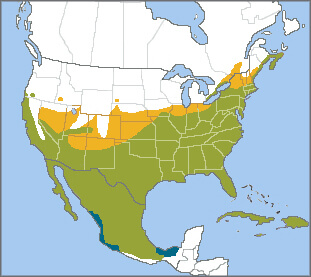
Northern Mockingbird Range Map
Photo Credit – American Bird Conservancy
Orange – Breeding; Green – Permanent Resident; Blue – Non-Breeding Resident
At the turn of the last century, California’s standard range for these birds was restricted to the Central Valley, as far north as Merced and along the coast south of Los Angeles; now, the species has become more broadly distributed, and in San Francisco, you may encounter them in the Presidio. The development of farmland, the outlawing of trapping to make them cage birds, and banning shooting them as an agricultural pest have supported this expansion. The species has been common in the southern United States and is the state bird in five states: Arkansas, Florida, Mississippi, Tennessee, and Texas.
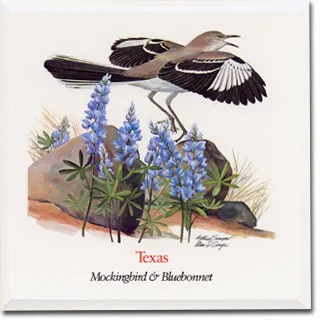
Texas Mockingbird and Bluebonnet
Photo Credit – American Meadows
As the novel To Kill a Mockingbird says, the mockingbird is innocent and harmless and should be allowed to sing and add beauty to its surroundings. Current population estimates are around 30 million in the United States and a little over 40 million worldwide.
The Northern Mockingbird sings repeated phrases throughout the day and often into the night. A single bird will develop a repertoire of up to 150 to 200 songs during its lifetime. It mimics the songs of other birds and impersonates cats, car alarms, lawnmowers, and police sirens. Expect to hear different songs in the fall from those in the spring. However, estimates are that 90 percent of its songs are pure mockingbird, and 10 percent are mimicry. The bird’s scientific name mimus polyglottos translates into “mimic of many tongues”. Native Americans used a name that translates into “four hundred tongues”. Maybe due to their noisiness, they are caught by cats, attacked by raccoons, and taken by birds of prey.
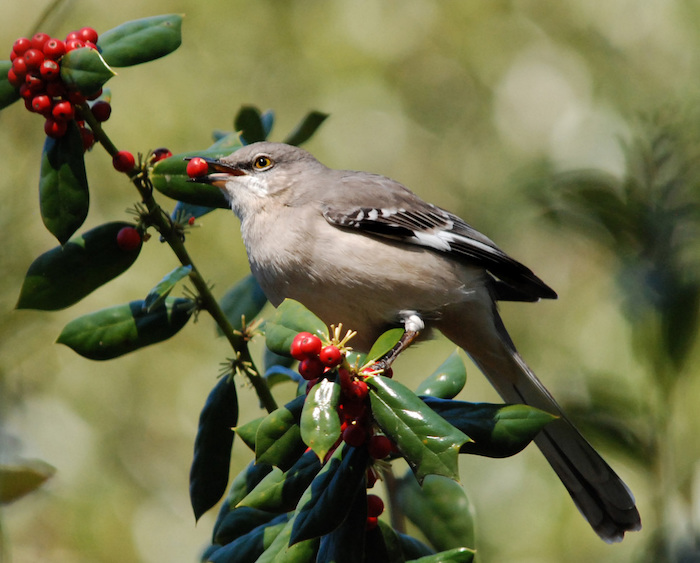
Northern Mockingbird Winter Diet
Photo Credit – iNaturalist
For food, their diet changes during the year. In summer, they primarily eat insects; in fall and winter, they consume fruit. They forage on the ground or in vegetation. Visits to garden bird feeders are rare, but in winter, suet, mealworms, and fruit may attract them. Their average life span is eight years, but some are known to live as old as 15.
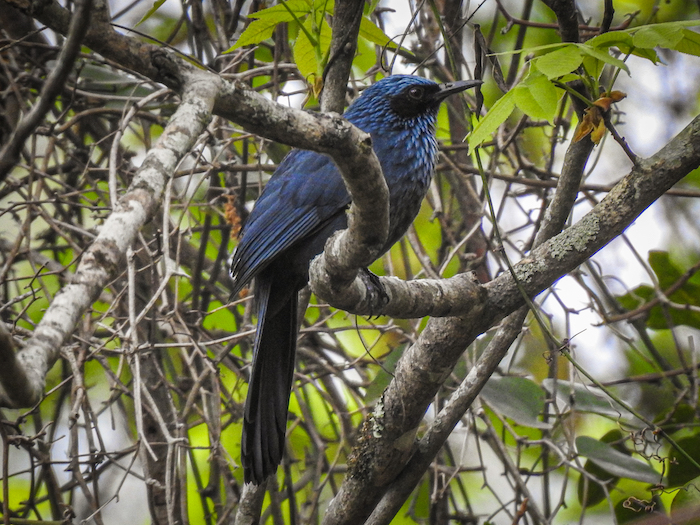
Blue Mockingbird
Photo Credit – Wikipedia
If you visit southwestern Mexico, do not be surprised to see a “blue” version of the mockingbird. The Blue Mockingbird is indigenous to Mexico, with an estimated population of up to five million. Both mockingbird species are of “least concern” from a conservation perspective.
Finally, you may want to listen to a singing Northern Mockingbird:



